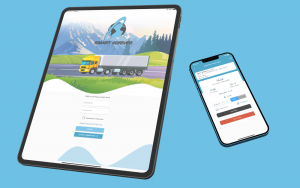What is Heavy Vehicle Fatigue Management?
Ever had a near-miss on the road because you’ve been tired? Maybe you’ve had trouble staying within a lane, or you’ve run a red light or missed a stop sign. Fatigue is something that we all experience from time to time, but when you’re on the road, it can have catastrophic consequences. Especially if you are driving a heavy vehicle.
Heavy vehicle fatigue management law, administered by The National Heavy Vehicle Regulator (NHVR), ensures that drivers are taking adequate rest breaks and working a reasonable number of hours. This law exists to prevent accidents.
This law, also known as the Heavy Vehicle National Law (HVNL), applies to all of Australia’s states and territories except the Northern Territory and Western Australia. It applies to drivers of fatigue-related vehicles in each of these states, and to those from NT or WA who cross into these six regulated states while driving.
Heavy vehicle fatigue management is a legal requirement for drivers of heavy vehicles to manage their fatigue by taking adequate rest breaks and limiting work hours.
What is a Fatigue-Related Vehicle?

The HVNL applies to drivers of heavy vehicles that the NHVR classifies as a fatigue-related vehicle. These vehicles meet a certain set of standards to fall under this category.
The NHVR classifies a fatigue-related vehicle as:
- a vehicle with a Gross Vehicle Mass (GVM) of over 12 tonne
- a combination when the total of the GVM is over 12 tonne
- buses with a GVM over 4.5 tonne fitted to carry more than 12 adults (including the driver)
- a truck, or a combination including a truck, with a GVM of over 12 tonne with a machine or implement attached.
The majority of the vehicles classified as fatigue-related vehicles are trucks and buses. Other heavy vehicles such as trams, agricultural machinery, bulldozers, tractors and residential motorhomes are not classified as fatigue-related vehicles.
According to the NHVR, in the six states and territories where the HVNL applies, there are more than:
- 91,700 registered prime movers
- 814,000 registered heavy vehicles
- 230,500 registered operators
- 475 road managers.
So, if you are a truck or transport driver in Australia, your heavy vehicle most likely qualifies as a fatigue-related vehicle, and you need to be abiding by heavy vehicle fatigue management laws.
Knowing the Signs and Symptoms of Fatigue
As a heavy vehicle driver, you may think you already know what fatigue looks like. You may believe that you already manage your fatigue appropriately. But have you ever had any of the below symptoms of fatigue, yet kept driving anyway? Sometimes the signs can be subtle, and we may disregard them.
Heavy Vehicle Driver Fatigue Symptoms
- Feeling a lack of alertness
- Excessive drowsiness and yawning or head nodding
- Falling asleep or taking micro-sleeps when you’re not meant to
- Scattered concentration
- Daydreaming
- Difficulty keeping your eyes open and on the road ahead of you
- Waking up after a sleep and still feeling groggy
- Blurred vision
- Mild hallucinations, such seeing things jumping out from the side of the road
- Having trouble keeping your head up
- A humming or vibration in your ears
- Changes to your moods
- Changes to your personal health or fitness such as aches and pains, muscle cramps
- Difficulty remembering the last few kilometres you drove
- Making small mistakes such as braking too late or missing turns
- Delayed or slower reactions
- Having a near-miss or incident on the road
- Struggling to maintain a constant speed
- Overshooting a sign or line
- Drifting in and out of lanes
- Poor gear changes
These signs of driver fatigue can all lead to accidents and even death. It is important that drivers pay close attention to the way that they feel, addressing signs and symptoms of fatigue as soon as they arise by taking rest breaks. The heavy vehicle national law sets maximum work and minimum rest limits to assist in this process.
HVNL Work Time and Rest Time Explained
A rest break doesn’t just consist of time that you aren’t driving. The HVNL measures work time and rest time in a specific way, incorporating other work tasks under the umbrella of work time to prevent fatigue. Other work responsibilities still count as work and should be thought of as such when monitoring fatigue.
Work Time
According to the NHVR, work time includes all tasks to do with the operation of a fatigue-regulated heavy vehicle such as:
- driving
- loading and unloading the vehicle
- inspecting, servicing or repair work
- attending to the load or to passengers (if you are driving a bus)
- cleaning or refuelling the vehicle
- instructing or supervising another person, including learning to drive a heavy vehicle, learning a new route, making deliveries etc
- recording information or completing a document (for example, your work diary).
These tasks can further fatigue and deplete us, as they require concentration and physical exertion. Switching to a task other than driving may make you feel like you are taking a break, but according to law, these activities cannot be considered as breaks.
Rest Time
Rest time is all time that is not work time. There are no stipulations to what this may consist of, except that it may not involve any tasks such as those mentioned above. This is strictly personal time.
How to Meet Anti-Fatigue Requirements and Stay Compliant
It can be confusing to understand the rules and regulations for heavy vehicle drivers. Although they are complex, these anti-fatigue laws exist to protect drivers and businesses by preventing accidents and fatalities. The minimum and maximum requirements for rest and work times must be monitored and records kept in order to provide evidence of compliance.
The best way to do this is by keeping a logbook, also known as the National Driver Work Diary. There are a number of ways to approach this, including maintaining a paper logbook or by using an electronic work diary.
Paper Work Diary for Heavy Vehicle Fatigue Management
A paper logbook can be used to record work and rest hours. While some drivers like this approach, many find it onerous and very manual. Keeping a paper work diary requires the driver to maintain an acute understanding of the fatigue management laws, which can be difficult to stay on top of. A paper logbook can also be easily lost or damaged.
Electronic Work Diary for Heavy Vehicle Fatigue Management
An electronic work diary (EWD) is an easy and efficient option for heavy vehicle drivers and fleet managers. An EWD can record rest and work times at the click of a button, while also providing automated notifications for rest breaks and potential compliance breaches. Electronic work diary apps like Smart eDriver take all of the complexity out of fatigue management and can reduce driver reporting time by up to 50%. With EWDs, you can achieve more without as many stops and starts on your route.
The Smart eDriver EWD app was the very first electronic work diary to be approved by the NHVR, and it remains the best option on the market today. Read more about the benefits of SED for drivers here, or the benefits for fleet managers here. No matter your role or your fatigue rule set, we’ve got you covered. Enquire now.

